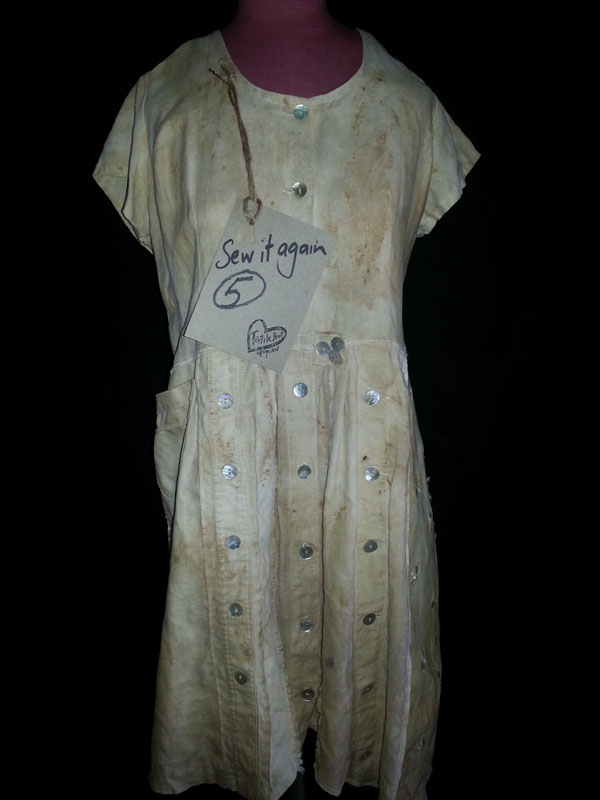 Colour can be transformational, and each day we enjoy a full range of nature’s offerings from sunrise to sunset when we take the time to look.
Colour can be transformational, and each day we enjoy a full range of nature’s offerings from sunrise to sunset when we take the time to look.
By comparison, white and pastel-coloured clothing can seem dull, doubly so considering the bright, computer-generated fabrics designs around at the moment. Combined with an out-dated style, it is not surprising such garments remain stashed in the back of the wardrobe.
I have a few white linen numbers hoarded for years because I value the fabric and shell buttons. They have intrinsic value, but were not being worn. So I upcycled them and used red leaves from my regular bush walk to experiment with eco colour.
Fabrics from plant fibres (linen and cotton) don’t take to colour as well as protein fibres (wool and silk) so I went in search of more information at Brisbane Library and discovered the beautiful books of India Flint.
Eco colour and Second Skin brim with inspiration. Dyes from plants are a renewable resource and in Eco colour, India has catalogued an amazing array of combinations and permutations.
If you are not fussy about the colour, what it seems to boil down to is: gather leaves, simmer in pot for a while, place them on moistened garment, wrap into a bundle, return to pot over very low heat for another while, leave to cool in solution as long as your curiosity will allow. Voila.
The dye uptake will be enriched if you pre-prepare the garment with an alkaline solution such as ash water (from a fire) or washing soda. India suggests using protein such as cows’ milk or soy milk which you leave to dry on the fabric before you dye it. Adding rusty metal objects, such as chains or old tools, to the dye bath also helps fix the colour.
Today’s offering started life as a long linen dress with shell buttons down the front. I cropped it off at the waist and added a new skirt made from an assortment of other white linens with more buttons. I created the new skirt as a long rectangle which was pleated randomly as it was sewn in place using zigzag stitch. The lengths vary and pockets are as they appeared on the original garments. I left the dress in moist ash for a day, bundled it with gum leaves and brewed in a pot with more leaves and a rusty spanner.
The garment has lost some of its colour after washing, but can be over-dyed again later to enrich it further. More dye projects ahead – it is fun and easier than it sounds because anything goes.

Interesting ideas, Jane. Jo.
Your work is excellent and encouraging to others. I learn’t about dying fabrics using plant material at QUT many moons ago and have since forgotten the details of how to go about it but you make it sound so simple.
Keep up the good work.
Lynn